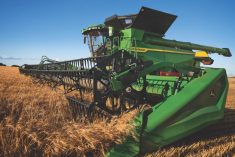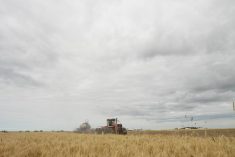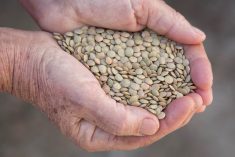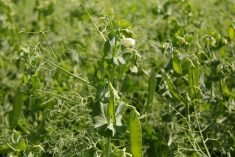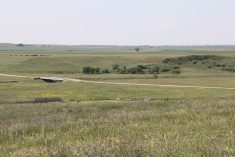One part of Ontario is wilting under the absence of moisture, another part is… managing.
As farmers in eastern Ontario look to the skies and the long-term forecasts for rainfall and relief, their colleagues in some parts of southern Ontario are doing a little better — concerned, but making do.
Regions north of Toronto and into the Niagara Peninsula are reporting much drier conditions compared to the traditional snow-belt areas adjacent and east of Lake Huron. That’s where farmers have been getting some precipitation — just enough to keep things growing.
Read Also

India slaps 30 per cent import duty on yellow peas
India has imposed a 30 per cent duty on yellow pea imports with a bill of lading date on or after Nov. 1, 2025.
“I’d almost say the crops are doing well,” says Robert Moloney, a certified crop adviser with Boyd’s Farm Supply near Fordwich, Ont., north of Listowel. “We’ve had just enough to keep us going.”
Where he has seen an impact from the drier weather is in plant populations in both corn and soybean fields. In corn, growers might have planted 34,000 seeds per acre and are seeing 30,000 to 31,000 emerged. In soybeans, where populations are normally 180,000 to 200,000 plants per acre, they’re around 140,000 to 150,000. It’s not a significant loss, but it’s predictable given the planting conditions and the lack of precipitation through much of June. Yet the corn is still canopying and replants on soybeans are few.
As far as stress is concerned, Moloney is seeing some signs of what he calls sandblasting on corn leaves. High winds have blown small particles across fields, and although they may appear to be diseased tissues, he believes it’s damage caused by the wind.
“On the soybean side, we’re definitely seeing a lot more symptomology of some of the pre-emergent herbicides, especially metribuzin,” he adds. “We’re seeing a lot of uptake, more so than normal, just because of the weird weather patterns we’ve seen.”
Mervyn Erb is another crop adviser who’s concerned with the lack of rain, but not to the point where he’s sounding any alarm bells — yet. If anything, the crops look smaller with some wrapping and twisting of corn leaves.
A small rain system developed on the night of June 21 and dropped less than a quarter of an inch (10 mm) on a region north of London and east toward Tavistock. On the 23rd, parts of Perth County in and around Stratford received a welcome shower. But the precipitation in both cases was short-lived — sufficient to provide moisture on the canopy but little that actually penetrated the soil surface.
“We’re forecast to hit 30 C again this Saturday (June 25), and we’ve had a string of low-humidity weather this spring, and that’s hard on moisture levels,” says Erb, an independent CCA from Brucefield.
“Even though things look pretty good — we have second-cut hay coming off — everything’s looking nice, but we’re just another couple of 30 C days away from having some drought stress.”
Erb echoes many of Moloney’s observations: soybeans are OK, although there are some tough-looking fields. Some were seeded under less-than-ideal conditions, and they’re struggling with their root systems.
In terms of diseases and pests, Erb notes there is a lot of seed corn maggot injury in soybeans in his region, which he finds frustrating, citing the government’s restrictions on the use of neonicotinoid seed treatments as the primary culprit. But the increased use of cover crops, he believes, is complicating matters.
— Ralph Pearce is a field editor for Country Guide at St. Marys, Ont. Follow him at @arpee_ag on Twitter.





